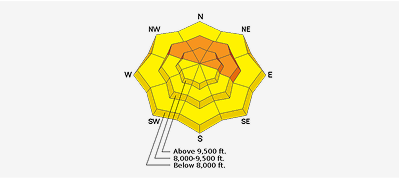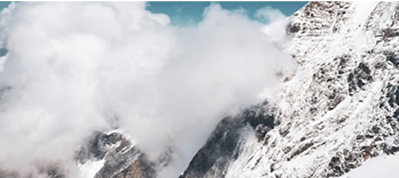Three inches of new snow had fallen in the past 24 hours, and that fell during the morning hours on Saturday. In the morning on Sunday before the sun changed things, there was 4 to 6 inches of very light density snow draped consistently over all aspects. This layer of new snow had appeared to dry out and lighten up significantly from Saturday. At 9300 feet, this new snow blanket was resting on a 3 cm thick rain crust, and overnight it's top 1 cm had refrozen. SH had grown overnight and capped this layer; and it was widespread and up to 4 mm in size in many locations.
By 1100, SE aspect began to get damp and the sun continued to work it's affects around the lower half of the compass. Roller balls and Loose Wet Avalanches were observed.






